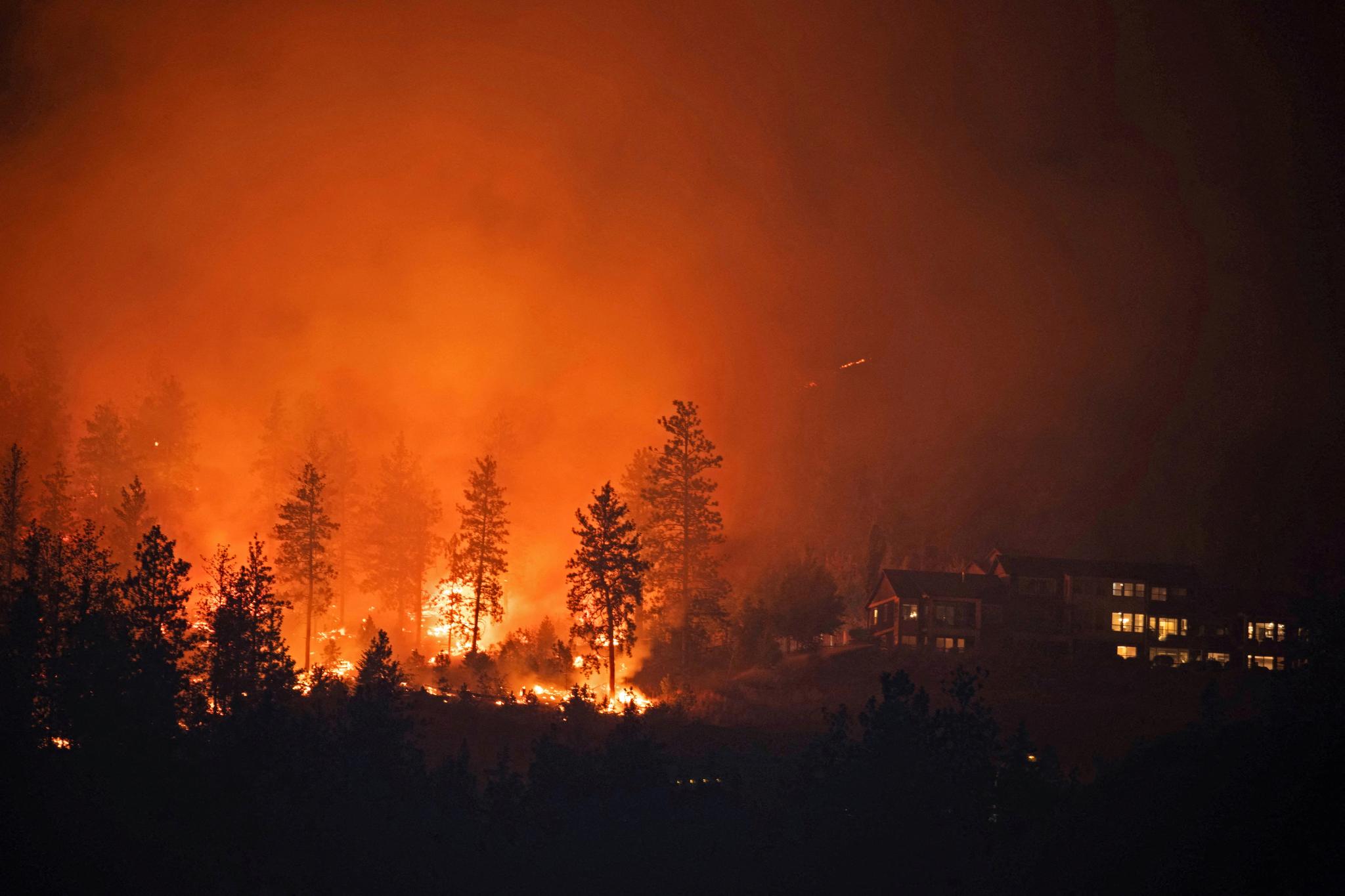Authorities in British Columbia, Canada, are pleading with residents and tourists in the Kelowna area to heed orders to evacuate as a major wildfire spreads rapidly.
The fire is raging on the outskirts of West Kelowna.
The short version
- Authorities in British Columbia, Canada, are emphasizing the severity of rapidly spreading wildfires in the Kelowna area and urging residents and tourists to comply with evacuation orders.
- The area is characterized by dense smoke and around 30,000 people have already received evacuation orders. Another 36,000 people were informed of a possible evacuation.
The summary is created using artificial intelligence (AI) and quality assured by Aftenposten journalists.
The situation in the popular outer Okanagan Valley is very dynamic, provincial Emergency Management Minister Bowinn Ma said Saturday evening local time.
Around 30,000 people were ordered to evacuate, while another 36,000 were warned they might be asked to evacuate.
– We cannot emphasize enough the critical importance of following evacuation orders. This applies to the life and death of those who live there, but also of the rescue teams, she told a press conference.
British Columbia Forestry Minister Bruce Ralston also points out that several tourists have visited the affected areas and posted photos on social media.
– Drones pose a great danger to crews fighting fires from the air. Taking photos of wildfires is not only irresponsible, but it’s also illegal to fly drones in fire zones, he says.
Suffocate from smoke
Kelowna, a city of 150,000 residents, was on the verge of being suffocated Saturday by thick smoke from several fires in the hills and mountains surrounding the city. A state of emergency was declared in the region on Friday.
There were 385 active fires as of Saturday evening local time in British Columbia alone, where many properties in the Kelowna area have already been engulfed in flames, including the historic Lake Okanagan Resort.

The Canadian city of Kelowna, which is a popular outdoor destination, is enveloped in smoke from wildfires surrounding the city.
State Premier David Eby announced a ban on visitors staying at area hotels and asked all guests to check and vacate rooms for evacuees and firefighters.
Fire crews arrived from Australia, Mexico, Brazil and Costa Rica, in addition to eastern Canada, to help with the extinguishing work.
South of the border, in the United States, several thousand people also had to flee forest fires in the Spokane region, in eastern Washington state.
Ghost town
And further north, in Canada’s sparsely populated Northwest Territories, firefighters are working frantically to prevent a major wildfire from reaching the capital, Yellowknife. The city appears like a ghost town after the evacuation of almost all of the 20,000 inhabitants.
This year, huge fires spread at high speed across Canada, reaching up to 13 provinces and territories across the country. 137,000 square kilometers were burned.
That’s almost twice as many as last year’s fire season and six times more than the average over the past 10 years.

“Passionate pop cultureaholic. Proud bacon trailblazer. Avid analyst. Certified reader.”







